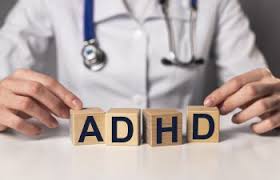Attention Deficit Hyperactivity Disorder (ADHD) is a neurodevelopmental disorder that affects individuals’ ability to sustain attention, control impulsive behaviors, and regulate activity levels. In a classroom setting, students with ADHD Treatment may face unique challenges that can impact their academic performance and social interactions. However, with the right support and strategies, educators can create an inclusive environment where these students can thrive. This article explores effective classroom strategies tailored to meet the needs of students with ADHD.
Understanding ADHD
Before implementing strategies, it’s crucial for educators to have a basic understanding of ADHD. ADHD manifests differently in each individual, but common symptoms include difficulty focusing, impulsivity, hyperactivity, and poor time management. Recognizing these symptoms can help teachers respond empathetically and appropriately to students’ needs.
Structured Environment
Students with ADHD often benefit from a structured environment with clear expectations and routines. Establishing consistent classroom routines can provide a sense of stability and predictability, reducing anxiety and improving focus. Teachers can create visual schedules and use timers to help students manage their time effectively and transition between activities smoothly.
Multi-Sensory Learning
Incorporating multi-sensory teaching techniques can enhance learning for students with ADHD. Instead of relying solely on auditory instruction, educators can incorporate visual aids, hands-on activities, and movement-based learning to engage students’ different senses. This approach caters to diverse learning styles and helps maintain students’ attention throughout lessons.
Breaks and Movement
Students with ADHD often struggle with sitting still for extended periods. Allowing frequent breaks and incorporating movement into lessons can help students release excess energy and improve focus. Teachers can integrate short movement breaks, stretching exercises, or sensory activities into the daily schedule to support students’ physical and cognitive well-being.
Chunking Information
Breaking down complex tasks or information into smaller, more manageable chunks can make learning more accessible for students with ADHD. Teachers can present information in a step-by-step format, provide clear instructions, and use visual organizers to help students organize their thoughts and stay on track. Breaking tasks into smaller increments also helps prevent students from feeling overwhelmed.
Positive Reinforcement
Positive reinforcement techniques, such as praise, rewards, and encouragement, can motivate students with ADHD and reinforce desired behaviors. Acknowledging students’ efforts and progress, rather than focusing solely on their shortcomings, helps build confidence and self-esteem. Teachers can establish a reward system or use token economies to incentivize positive behavior and academic achievement.
Minimize Distractions
Students with ADHD are often highly sensitive to environmental stimuli, such as noise, clutter, or visual distractions. Creating a distraction-free learning environment can help students stay focused and minimize disruptions. Teachers can arrange seating to reduce distractions, minimize background noise, and provide noise-canceling headphones or study carrels for individual work.
Effective Communication
Clear and concise communication is essential when working with students with ADHD. Teachers should use simple language, provide explicit instructions, and check for understanding regularly. Breaking down tasks into smaller steps and repeating key information helps ensure students grasp concepts and follow directions effectively.
Collaboration and Support
Collaborating with parents, special education professionals, and support staff is essential in meeting the unique needs of students with ADHD. Regular communication and collaboration ensure consistency across home and school environments, allowing for coordinated support strategies. Educators can work with other stakeholders to develop Individualized Education Programs (IEPs) or 504 plans that outline specific accommodations and interventions for students with ADHD.
Self-Regulation Strategies
Teaching self-regulation techniques empowers students with ADHD to manage their impulses and behaviors independently. Strategies such as deep breathing exercises, mindfulness activities, and self-monitoring tools help students develop self-awareness and self-control. By incorporating these strategies into daily routines, teachers can equip students with lifelong skills for managing their ADHD symptoms effectively.
Flexibility and Patience
Finally, it’s essential for educators to approach students with ADHD with flexibility, patience, and empathy. Recognizing that each student is unique and may require different supports allows teachers to adapt their approach accordingly. Celebrating small victories, offering encouragement, and providing a supportive learning environment are essential components of helping students with ADHD succeed academically and socially.
In conclusion, implementing effective classroom strategies is crucial in supporting the diverse needs of students with ADHD. By understanding the challenges associated with ADHD and employing targeted interventions, educators can create an inclusive learning environment where all students can reach their full potential. Through collaboration, patience, and empathy, teachers play a vital role in empowering students with ADHD to thrive academically and succeed in life.
